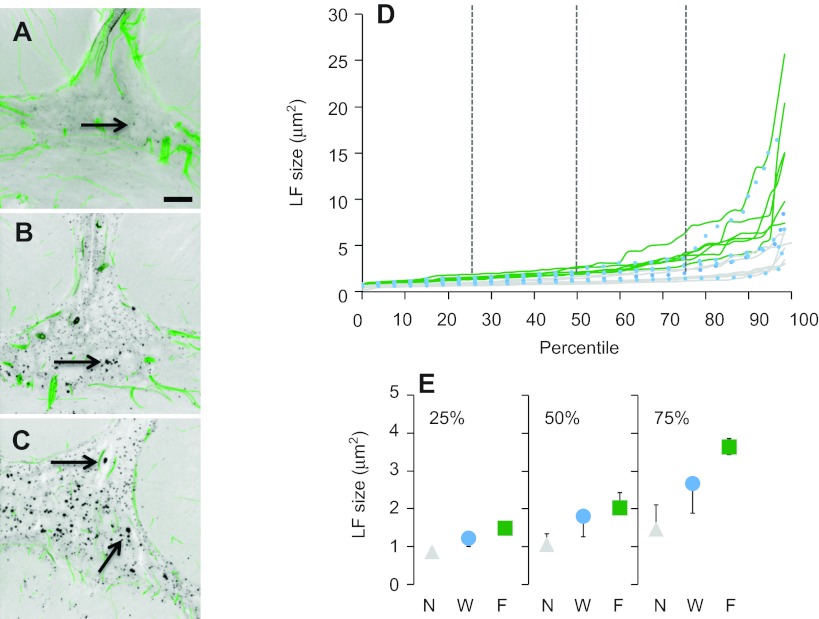Fig. 7.
Lipofuscin (LF) accumulation in midline areas of the central brain (pars intercerebralis) was increased after old winter bees changed to foraging. (A–C) Projection views of image stacks showing LF fluorescence (arrows) in the pars intercebralis, a major neurosecretory center. Representative examples for young control (A), old winter (B) and old forager bees (C; for color scheme and age details, see Fig. 4). (D) Distributions of LF granule sizes for individual bees. Note the differences between forager bees (green lines), winter bees (blue circles) and young control bees (gray lines) in the class with largest LF granules (≥75th percentile). (E) Group differences between old winter (W), old forager (F) and young nest control bees (N) were evaluated for small, median and large LF size classes (25th, 50th and 75th percentile values of each individual; see D). Except for the smallest class (25th percentile), old foragers showed significantly larger LF granules than old winter bees. In addition, LF granules of winter bees were not different from young controls in two out of three size classes (25th and 50th; see Table 1). Medians and quartiles for each phenotype are shown. For statistical details, see Table 1. Scale bar in A for A–C, 20 μm.

